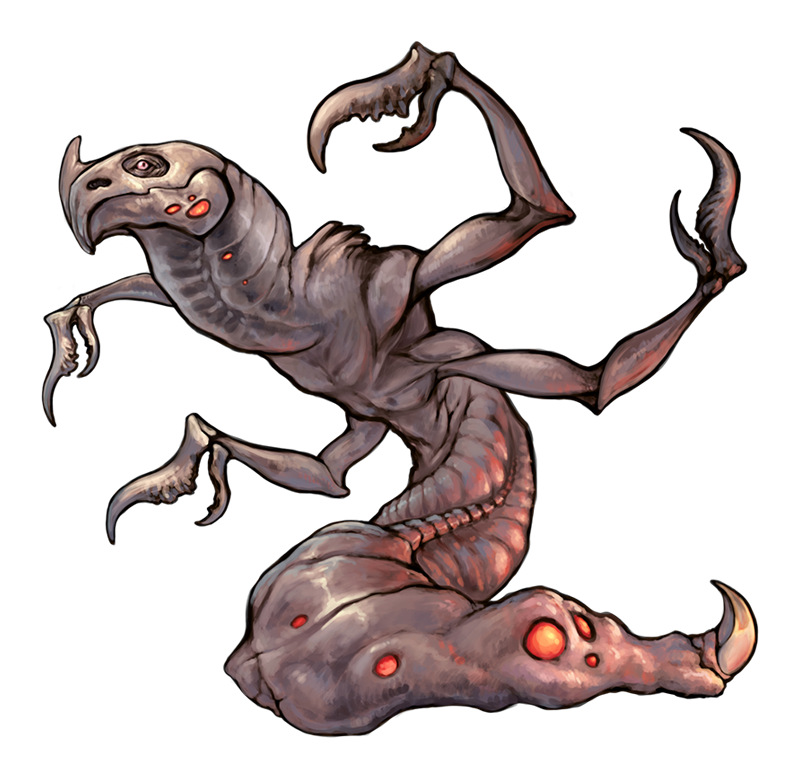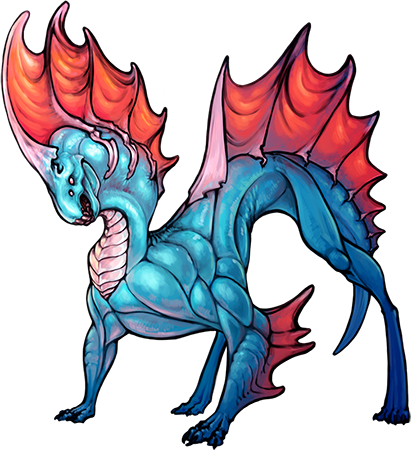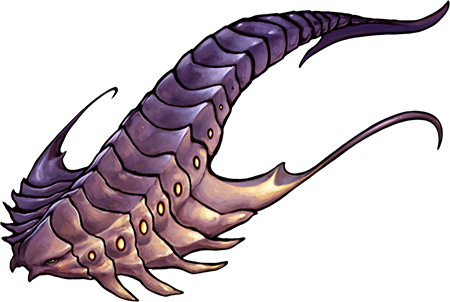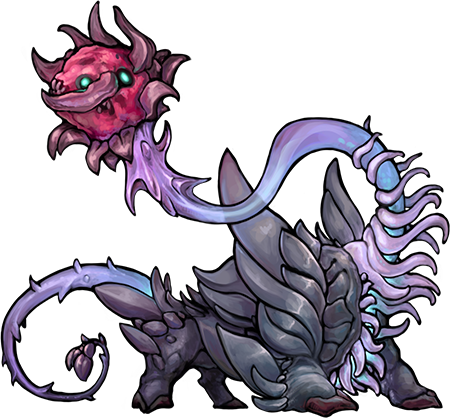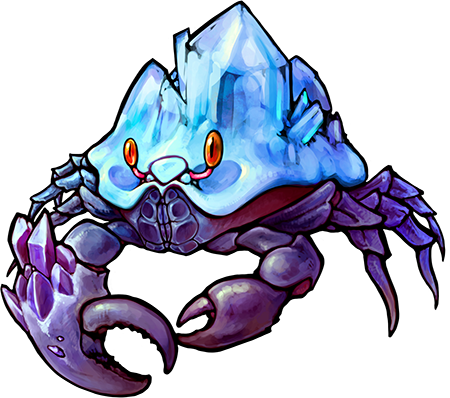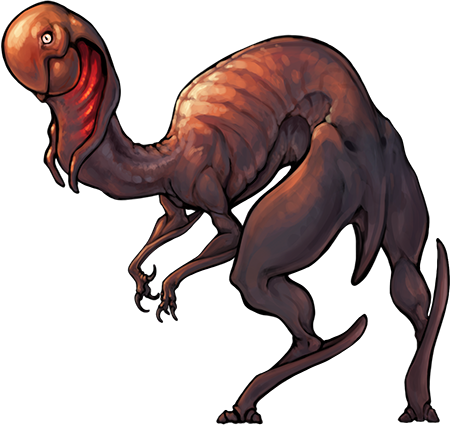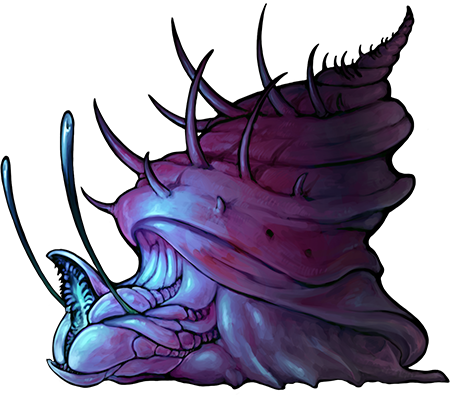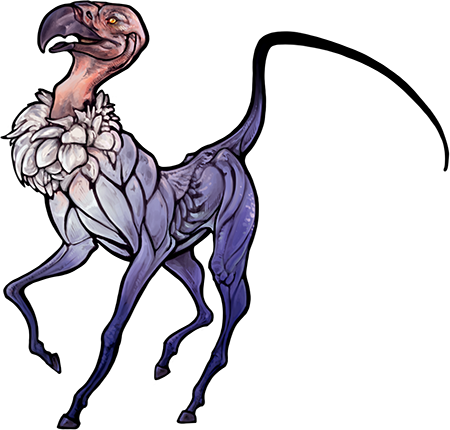Reducenta
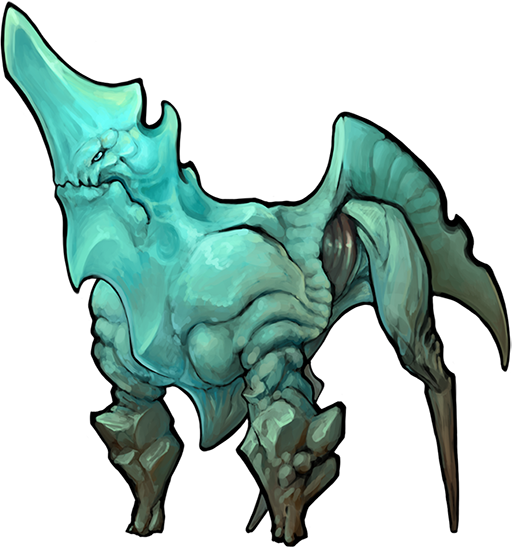
It is written in the most ancient and arcane scrolls of the past that in the times before the Age of Primordial Wonder when the Sun was younger and smaller, the entirety of Europa was covered in thick ice. Before the demigods set foot on its surface, there were no islands there – only icy deserts under which a dark, lightless ocean laid in eternal slumber.
But as it is written, this ocean wasn’t lifeless.
Primitive creatures dwelled at the very bottom of this ocean. Feeding on the warmth of volcanic rifts and the hydrogen sulfide those rifts produced, these creatures evolved at a slow but steady pace. Having developed a symbiosis with bacteria, they gained the ability to reduce organic material into simple non-organic elements, using them to construct their own bodies. Finally, after a million-years-long evolution process, they achieved a result truly wondrous – they gained the freedom of movement.
It was in this state that the demigods found them; crystal-like drifters, striding across the ocean bottom from one rift to another, seemingly the only life form truly originating from Europa itself. It has been speculated by some visionaries among the Sentinels of the Wyld that these Riftias were the basis the demigods used to build the whole of Europa’s life, but this can hardly be true. However, with no concrete evidence remaining from this ancient time to fully disprove their speculations, this origin theory has yet to be outright rejected.
No evidence has been found to suggest that the Riftias existed during the Age of Primordial, and no one spoke of them throughout the Age of Long Dark. However, proof of the descendants of this alien life form revealed itself not long ago in the Age of Discovery. Strange creatures that came to be known as Etelias were discovered in the Far South area called Dark Antarctica. The Beast Keepers of Europa became so fascinated with these semi-organic crystal beings that they brought them back to the warmer regions of Europa, leading to the phenomena called Long Winter, the consequences of which were quite dire. The Sentinels of the Wyld declared the shift in balance to be fatal to the land, urging the forced decrease of the Etelia population. Common folk and Beast Keepers alike followed this urge to cut down the Etelias’ numbers, which in the end lead to great unrest in Beastopia. But the final strike came from the Europa Arcane Mechanism (initiated by the Administratum according to some gossips). Thallo, the great Kami of Spring, manifested herself, restoring the climate back to normal and sadly leading to the demise of many Etelias. Since then, through the eon change, these graceful creatures have completely disappeared…
But only a few eons after, in the icy archipelago of Arctyda that rests at Europa’s north pole, a new species was discovered, very different from Etelias but in some ways similar, which allowed the Beast Lords who discovered them to assume they were both descendants of the same ancestors – Riftias.
These curious but rather dangerous beings were called Reducentas, after their ability to reduce organics into non-organics, forming crystal bodies of unmatched vigor and endurance. Where Etelias were peaceful things of silent beauty, the Reducentas are monsters of rampant horror. Their ability to completely transform any organics into energy and body material makes them ever-hungry and ever-growing. Some Keepers who ventured far into Arctyda speak of the iceberg-like colossuses stalking the frozen shores, constantly consuming every single being along their way - from plankton to the great sea serpents and even Keepers’ warships.
But those larger, ancient horrors may prove to be far less dangerous than their younger siblings, for they are slow and easily avoidable. On the contrary, smaller Reducentas are fast, tireless, and extremely deadly predators. Their primitive consciousness works to their advantage – the only chance you have to throw one off your tail is to inflict it a serious damage which, considering their body structure, may prove to be more than difficult.
Ambushers by nature, Reducentas spend most of their lives slowly drifting under the ice, consuming plankton and seaweed as they wait for larger prey to show up. They use their sharp thorn-like excrescences to crash through the thick ice as soon as they sense an organic lifeform on the surface. These excrescences also prove useful during the pursuit of underwater prey, making the Reducenta’s body streamlined and capable of turbine-propelled movement – high energy-consuming, but deadly fast.
Due to the manner in which Reducentas take in organic matter to create their bodies from non-organic substances, they can mold their forms in different ways. Some among their kind build strong limbs in order to make themselves more suited for surface movement, granting them the ability to venture deep into the icy lands of Arctyda. The most ancient of Reducentas became enormously gigantic beings, bearing little resemblance to any living creature.
Any traveler who dares venture into the far north should be aware that Reducentas are mindless monsters that cannot be reasoned with, tamed, or even scared off. One can attempt to distract or wound them, but these are only temporary measures when dealing with Reducentas. Do not dare to wander Arctyda unprepared, for this realm is unforgiving and its masters in their hunt are truly relentless.
